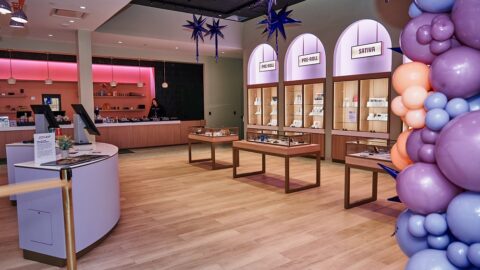Retailers have geared up for the back-to-school season (BTS) by rolling out interactive marketing strategies, mobile applications, and new products to increase foot traffic and sales. In-store and online merchants who can pique the interest of students and their parents are poised for financial success, according to new research from Deloitte Consulting.
Findings from Deloitte’s 2012 Back-to-School Survey revealed that a vast majority (88%) of consumers expect to spend more or the same amount on BTS as they did in 2011.
Most respondents (64%) plan to spend between $100 and $499 during the BTS shopping season. Additionally, 38% of respondents claim their children will be spending $201 or more of their own money on clothing and other BTS supplies, a significant increase from 2011 (16% of respondents).
Advertisement
The Deloitte survey garnered detailed insights on the psychology of parents’ shopping behaviors and their overall intent to spend before the new school year, Mary Delk, Director of Deloitte’s Retail Practice, told Retail TouchPoints. Results were gathered via an online survey of 1,134 parents with at least one child attending school in grades K-12 this fall.
“While consumers overall have a greater intent to spend compared to last year, they’re continuing to exert their consumer power and are trying to get the biggest bang for every dollar they spend,” Delk said. “This means they still have the desire to be smart and savvy in their shopping.”
Standard school supplies such as pens, pencils and paper are most in demand, with 94% of consumers planning to purchase these items. Following in overall intent to purchase is clothing (89%) and shoes (80%).
While most respondents (66%) indicated that they plan to buy BTS items on sale, more shoppers will be gravitating to traditional brick-and-mortar locations, such as department stores, Delk explained, rather than dollar stores and other high-discount outlets.
Other factors driving greater spending during the BTS season include:
- Higher prices on necessary items (58%);
- One or more children need more expensive items (such as computers) than they did last year (34%);
- School budget cuts mean parents will need to pay more for items (26%);
- More children are going to school this year versus last year (21%); and
- Due to cut backs on purchases last year, certain items need to be replenished (14%).
Social Media In The BTS Mix
As shoppers become savvier in their browsing and buying strategies, digital tools and technologies such as social media and smartphones will play a more pivotal role in decision-making.
Overall, 22% of respondents in the Deloitte survey indicated that they plan to use social networking sites to aid in their BTS shopping. They stated they will use these sites for:
- Learning about promotions (70%);
- Browsing products (49%);
- Reading reviews/recommendations (39%);
- Linking to retailers’ pages (36%);
- Posting comments, reviews or feedback to retailers or other consumers (18%); and
- Publishing on and/or viewing virtual image boards (17%).
Social media’s highly interactive experience and ability to increase brand buzz is being transferred to image-focused sites such as Pinterest and Instagram, Delk noted. These social networks, she added, present a unique opportunity for retailers to better connect with Generation Y consumers rather than their parents.
“These image boards attract younger consumers who respond strongly to new trends and have an influence over where parents spend their money,” Delk said. “Merchants need to keep note of items shared most often on these sites and keep those items in stock across channels, especially from a clothing perspective.”
Smartphones Impact BTS Purchases
As social media makes inroads into consumers’ every day shopping behaviors, smartphones are making an even greater impact on how and from where product information is gleaned.
The Deloitte study showed that 65% of consumers plan to use their smartphones to assist in BTS browsing and buying processes. The most common mobile behaviors were as follows:
- Receiving price information (62%);
- Browsing products (49%);
- Downloading discounts, coupons and sale information (45%);
- Obtaining information on a store location (38%); and
- Sifting through product information (35%).
“Our research shows an ever-growing number of smartphone subscribers,” Delk said. “Retailers must have a strategy that supports the fact that consumers are going to be using mobile devices to receive information, look for coupons, find sales and ultimately make decisions. Today it is a qualifier for retailers to make it easy for a consumer to use a mobile device to purchase from their stores.”








